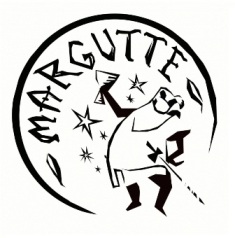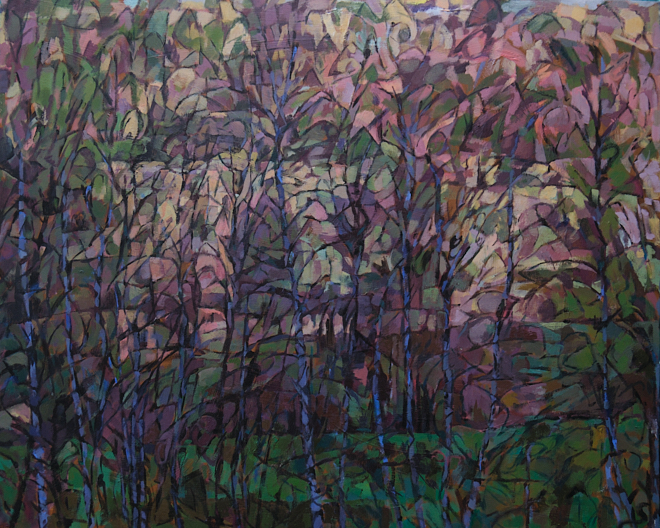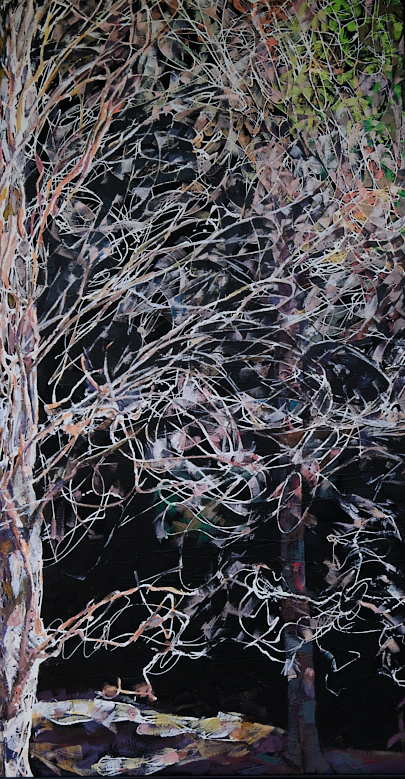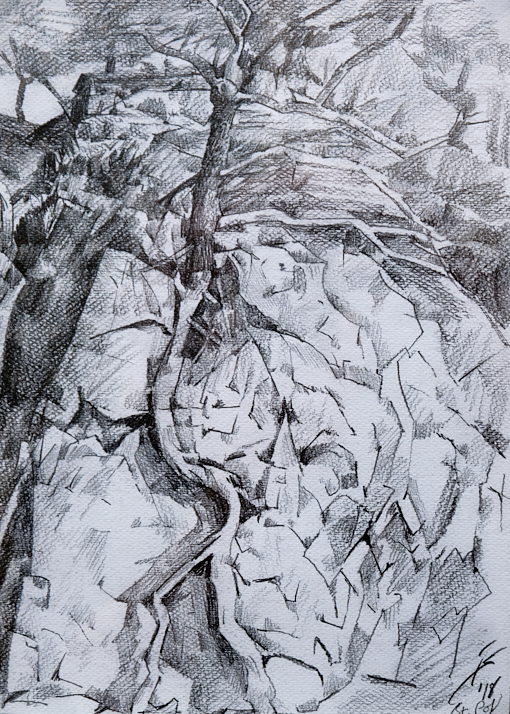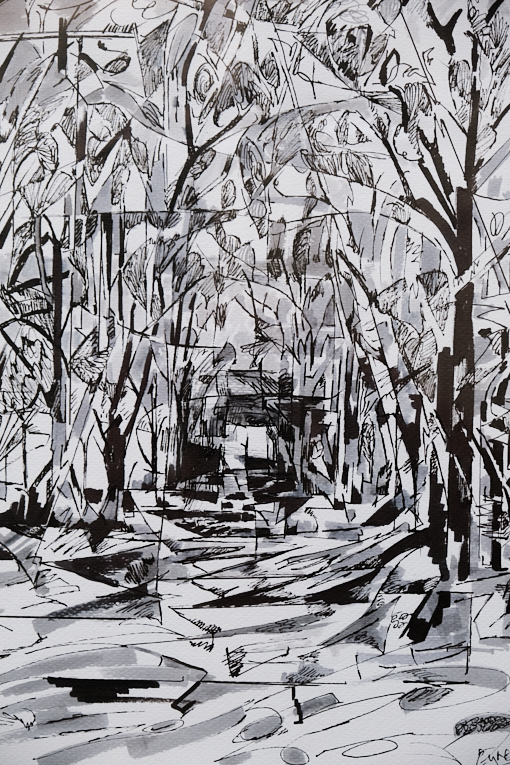PAUL SCOTT DERRICK
Ian Sharp (b. 1954 in Louth, Lincolnshire) is an undiscovered talent. Except for a smattering of local exhibitions in the city of Valencia, where he lived from 1984 till 1996, and a few more in the seaside town of Sant Feliu de Guíxols, where he has resided since 1996, his substantial and impressive body of work has had no public exposure. It’s time for this to change.
There are many reasons why his ouvre has remained almost completely unknown. He is determinedly independent and has always followed his own inner light. A rare quality in these fashion- and fame-besotted times. And, being true to himself, he has consistently refused to adopt, or to mimic, any popular trend or style of the day. So you will find no facile tricks in his canvasses. Only serious striving to satisfy a personal need. As a consequence, like Emily Dickinson in the 19th century, he has never persistently sought out public recognition and shares his work almost exclusively with a reduced circle of friends and acquaintances.
If it’s true that he has no “signature” style, there is one constant in his work: he eschews non-objective painting. He only paints what he can see – the world he is immersed in. This fact, however, does not lead to Realism. Ian is a keen student of the history of Occidental art. Among his most cherished predecessors are Claude Monet, Paul Cézanne, Oscar Kokoschka and Jackson Pollock. He understands the various transformations of 19th-century Realism in the West and so – importantly – also paints what he feels about what he sees.
In one of Ian’s paintings you always know what you’re looking at; the so-called “objective” world is always there. But it is modified by the artist’s highly individual perception which, in turn, is affected, or “tinged”, by both his intellect and his sensibility. Intellect and sensibility in a delicate balance. And therefore, you find paintings – as well as, in more recent years, drawings – that resolve into a wide variety of suggestive styles: Impressionist (especially echoes of Monet), Post-Impressionist (especially echoes of Cézanne),
Expressionist (especially echoes of Kokoschka and Van Gogh), Cubist (especially echoes of Braque), Abstract Expressionist (especially echoes of Pollock), and more.
It is ironic that this stylistic mutability (or perhaps better, dynamism) might be considered a particularly Post-Modern characteristic. Ironic because he shuns all systematic labels, and being a Post-Modern artist is undoubtedly the furthest thing from Ian’s mind. Just as Richard Berengarten, the motivating force behind the Albero Project, masters a wide range of poetic styles, Ian is proficient enough to paint and draw in a wide range of visual styles, and too honest to chain himself to any single one.
His subject matter, too, is varied. It’s probably safe to say that trees, their endless diversity of forms and hues, their movement and seasonal flux, fascinate him most. But he is also drawn to the Mediterranean coastline – Sant Feliu de Guíxols is located on the Costa Brava – with its serene or wind-swept waters, intense light, vibrant colours and sharply delineated shapes and shadows. These paintings capture how the burst of sunlight on sea and sand confuses the eyes and melts away all impurities. Then, imposed on the horizontal lines of shore, sea and sky are the verticals of the Mediterranean pine, lending added structure and an unexpected rhythm and grace to the play between surface and depth.
Domestic interiors are another of his more frequent themes, including an intriguing series of mixed-media pieces in which chalk, charcoal, pastels and geometrical cuttings of construction paper fuse together to form the illusion of a painted surface. He has even taken on, and in my opinion successfully met, one of the great challenges for any serious painter: darkness, the representation of night. His paintings of dark interiors with a door just ajar and light seeping out from behind are fraught with a charge of inexplicable mystery. Not to mention a good number of outdoor evening scenes, scattered with the weak points of light of streetlamps or windows that just manage to reveal a world of things quietly waiting beneath a shroud of obscurity.
Ian Sharp possesses all of the qualities required of the outstanding visual artist: an incisive intellect and broad intellectual curiosity, a love of and respect for the look of the world, a mastery of painterly technique, a fine sense of colour and composition and a delicate sensitivity to experience. Perhaps the only thing missing is an overweening ambition, a thirst for recognition and fame. But that lack, in my book, is a plus. This is an artist who works in a different light from that of the public eye. A Mediterranean light that bathes his painting and offers us the essential beauty of things – trees, seascapes, homely interiors – transformed into the humanised beauty of art.
